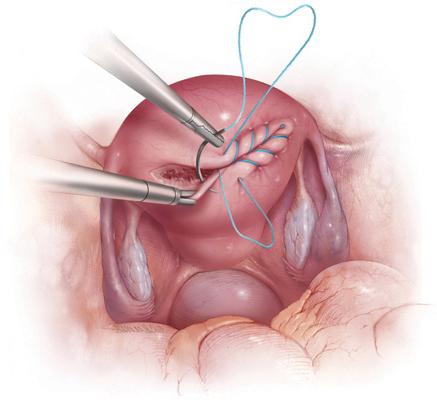Laparoscopic myomectomy is an operation performed with uterine myoma. It involves the removal of pathological nodes through punctures or incisions on the abdominal wall. As a rule, it is used when large fibroids are detected or in case of severe complications of fibroids (bleeding, infertility).
Operation benefits
One of the most important advantages of laparoscopic (conservative) myomectomy is the preservation of the uterus and all its functions, including menstrual. Another significant advantage is the low invasiveness of the operation and the quick recovery of the body after it.
Operation disadvantages
The operation to remove myomatous nodes has only a few, but quite serious drawbacks. The first of them can be called the risk of recurrence of the disease several years after surgery. The reason for this is the impossibility during surgery to determine the presence of small nodules, which over time increase in volume. The second drawback is the possible damage to adjacent internal organs - the intestines, bladder and ureter.
When and to whom is conservative myomectomy indicated?
Many doctors advise resorting to this operation only to young women who are planning a pregnancy in the very near future, and myomatous nodes have grown to such sizes that drug treatment will not give the desired effect. But for those ladies who no longer want to have children, it will be more rational to carry out surgical intervention to remove the uterus. Indeed, in almost all cases of the disease, a relapse of the disease can occur over 5 years.
Laparoscopic myomectomy is also prescribed in cases where there are contraindications for uterine artery embolization - insertion of the embolization drug into the vessels via a special catheter through the puncture of the femoral artery.
Laparoscopic myomectomy: contraindications
- Suspicion of a malignant tumor.
- A large number of interstitial nodes, the removal of which the preservation of reproductive function is impossible.
- The presence of general contraindications to laparoscopy, which can be a threat to a woman's life.
According to many gynecologists, obesity of 2 and 3 degrees and the presence of adhesions is a contraindication to this operation.
Laparoscopic myomectomy technique

The essence of this surgery is to pierce the anterior abdominal wall with a trocar in four places. A laparoscope is inserted into one puncture (in the navel region), and surgical manipulator tools are inserted into the other three (in the lower abdomen). For a more convenient operation, carbon dioxide is introduced into the abdominal cavity . Then, the uterine membrane is dissected with a surgical manipulator, and the myoma nodes are removed, and bleeding is stopped using an electrocoagulator. The surface where the nodes were located was irrigated with saline, and the nodes themselves were removed, depending on their size: through a puncture (with a small size), where the instruments were inserted, or through a cut dome of the vagina (with a large size). Laparoscopic myomectomy is performed under general anesthesia. The duration of the entire operation is from 60 to 180 minutes. This type of surgical intervention is very similar to the operation to eliminate a hernia of the abdomen (laparoscopic hernioplasty), which is also performed by piercing the abdomen with a thin tube.